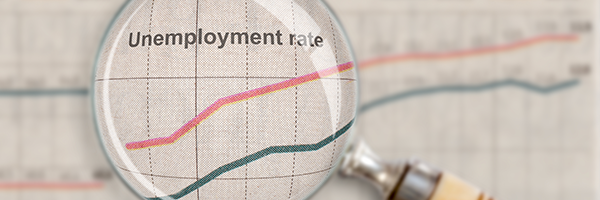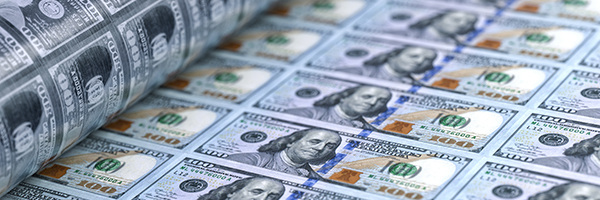
January 20, 2023 | Daily JAM, Morning Briefing |
This may seem perplexing: Alphabet (AKA Google) announced that it would cut 12,000 jobs just days after Microsoft (MSFT) said it would cut 10,000 jobs. And stocks, especially technology stocks, rallied. The Standard & Poor’s 500 closed up 1.89% today and the Dow Jones Industrial Average ended the day up an even 1.00%. The technology-heavy NASDAQ Composite finished up 2.66% and the NASDAQ 100 wound up climbing 2.86%. But remember that the economy doesn’t equal the stock market

January 16, 2023 | Daily JAM, Videos |
This week’s Trend of the Week: Beyond 5%. On Monday, January 9, it looked like the market was going up until Raphael Bostic (head of the Atlanta Fed) and Mary Daly, (head of the San Francisco Fed) came out saying that Fed rates may have to be raised to above 5%. Unsurprisingly, this stopped the rally in its tracks. On Tuesday, January 10, the theme of “beyond 5%” continued with Jamie Dimon, CEO of JP Morgan Chase, reiterating the idea of a 50% chance of rate increases that took the peak up to 6%. The market consensus has comfortably settled on a 5% peak, but the idea of a possible rise to 6% is starting to percolate through the market. I’m still looking for a bottom in this market in mid to late 2023. Turmoil in Congress over the debt ceiling could push that out a bit further.

January 12, 2023 | Daily JAM, Morning Briefing |
Inflation, measured by the headline CPI (Consumer Price Index) fell 0.1% in December versus November. That brought the annual headline inflation rate to 6.5%. That was exactly what a consensus of economists was looking for. The core DPI, which strips out more volatile food and energy prices, rose by 0.3% in December from November. That brought the annual core inflation rate to 5.7%. Again, exactly what economists had forecast. (Remember, the inflation rate peaked at 9.1% this summer.) The stock market didn’t know quite what to do with this inflation reading, however.

January 11, 2023 | Daily JAM, Morning Briefing |
Let’s be honest, everybody from the experts down to you at your home computer is flying blind right now. Trends are so event dependent that I’m not sure there actually is a trend that’s worth buying into for more than a day or two. This will all resolve itself one day–I’d estimate by the middle of 2023–but until then my advice is to NOT get caught up in any of the waves of conflicting short-term sentiment rolling through the market.

January 8, 2023 | Daily JAM, Morning Briefing |
On Thursday, before the New York market opens, the Bureau of Labor Statistics will report CPI inflation for December. This report will be the last before the Federal Reserve meets to set interest rates on February 1. The Fed already knows what the report says about inflation, but financial markets will react as if this new CPI inflation data will make the difference between a 50 basis-point increase (in line with the 50 basis-point increase on December 14) or will see the central bank send a positive signal on inflation and interest rates by slowing to a 25 basis-point increase. Right now the CME FedWatch Tool says the Fed Funds market is pricing in 86.6% odds of a 25- basis -point move and just 23.4% odds of a 50-basis-point increase.

January 4, 2023 | Daily JAM, Morning Briefing |
Minutes from the Federal Reserve’s December 14 meeting stressed the central bank’s commitment to bring inflation down to the target 2% even at the cost of a recession. Although the financial markets were thinking about the Fed beginning to cut interest rates in the second half of 2023, nothing in the minutes pointed to that likelihood. And in fact, the Fed went out of its way to say that financial markets were underestimating the length of time remaining in this cycle of higher interest rates.

January 2, 2023 | Daily JAM |
The stock market in 2022 was extraordinarily event-driven. The Federal Reserve’s decision to, finally, raise interest rates and to raise them fast with four 75 basis point jumps during the year. Russia’s invasion of Ukraine and the resulting shock to energy and food commodity markets. OPEC’s decision to reduce production. The big slowdown in China’s economy as the country first fought Covid with the lockdowns of major cities and industrial regions and then reversed course to no Covid policy at all. The unexpected (by many) ability of Democrats in Congress and the Biden administration to pass legislation with unprecedented levels of spending on clean energy technology and other efforts to slow the rise in global temperatures. 2023 will come with its own set of new (and revisited) market-moving events. Once again I think we’re looking at a year where market trends aren’t determined by revenue and earnings but by big events outside the market itself. Here’s my forecast of the 10 events (or trends or whatever) that will move stocks in 2023. I’ve tried to put them in some rough kind of chronological order so you’ll know when to what for events to unfold and ripple out into the financial markets.

January 2, 2023 | Daily JAM, Morning Briefing |
It’s deja vu all over again as New York stock markets reopen for trading tomorrow.
We ended 2022 waiting for the monthly jobs report from the Labor Department to tell us when slower job growth would signal the potential end to the Federal Reserve’s cycle of interest rate increases. And we’re beginning 2023 the same way. The Labor Department will release the jobs report for December on Friday at 8:30 a.m. New York time. Economists surveyed by Bloomberg are projecting that the economy added 200,000 jobs in the month.That would be a strong but not too strong figure that’s unlikely to provide much clarity on the temperature of the jobs market or Federal Reserve policy. That’s especially true because the December jobs report is subject to significant seasonal error because government statisticians struggle to figure out how to adjust the data for seasonal holiday hiring. The Friday report will be preceded this week by the Job Openings and Labor Turnover Survey (or JOLTS report), ADP’s private payrolls data, and the Challenger Job Cuts report.
December 30, 2022 | Daily JAM, Morning Briefing |
The big investing and economic question for 2023 is How hard will it be to push inflation to something near the Federal Reserve’s 2% target? The answer will determine (at least until rising unemployment gets the Fed to blink in the second half of 2023) how far and how fast the Federal Reserve will have to raise interest rates, how big a danger a true recession is, and how much of a slowdown we’ll see in economic growth and corporate profits? And the answers to those questions will largely determine the direction of the stock market in 2023. I’d like to offer two of my own observations from my personal Christmas shopping season free of charge to those economists who are now grappling with these questions. My personal experience says that inflation will be stickier than the consensus on Wall Street now believes. And that it will be very, very hard to push inflation back to the Fed’s target range without a true recession.

December 15, 2022 | Daily JAM, Morning Briefing |
Yesterday, Fed chair Jerome Powell in his post-Fed-meeting press conference said that a recession in 2023 isn’t inevitable. Growth will stay positive next year, he continued, although “it’s not going to feel like a boom.” How much isn’t it going to feel like a boom? The Fed’s Dot Plot projections, updated for this meeting, predict 0.5% growth in U.S. GDP for 2023. That’s down from the 1.2% growth projected in the September Dot Plot. In 2024, the Fed said, growth will speed up to 1.6%, still not exactly a boom. In September the Fed projected 1.7% growth for 2024. And it will feel like a recession to many people.

December 14, 2022 | Daily JAM |
The Federal Reserve raised interest rates by 50 basis points today, December 14. That was a significant step down from the series of 75 basis point increases that the Fed has imposed this year. But in its Dot Plot projection and in Fed chair Jerome Powell’s comments after the rate announcement, the central bank signaled that it will raise interest rates to a higher peak and keep them at that level for longer than the financial markets had hoped. Stocks slipped on the combination of small rate increase and higher projected peak.

December 14, 2022 | Daily JAM, Morning Briefing |
If as expected the Federal Reserve raises interest rates today by just 50 basis points, many investors–and perhaps the entire stock market–will see that as a sign that the Federal Reserve is poised to begin a pivot from its policy of aggressive interest rate increases. And that it will pause those interest rate increases relatively soon. Perhaps after another two 25 basis point increases in February and March. Will Fed chair Jerome Powell try to talk the market out of this belief?












